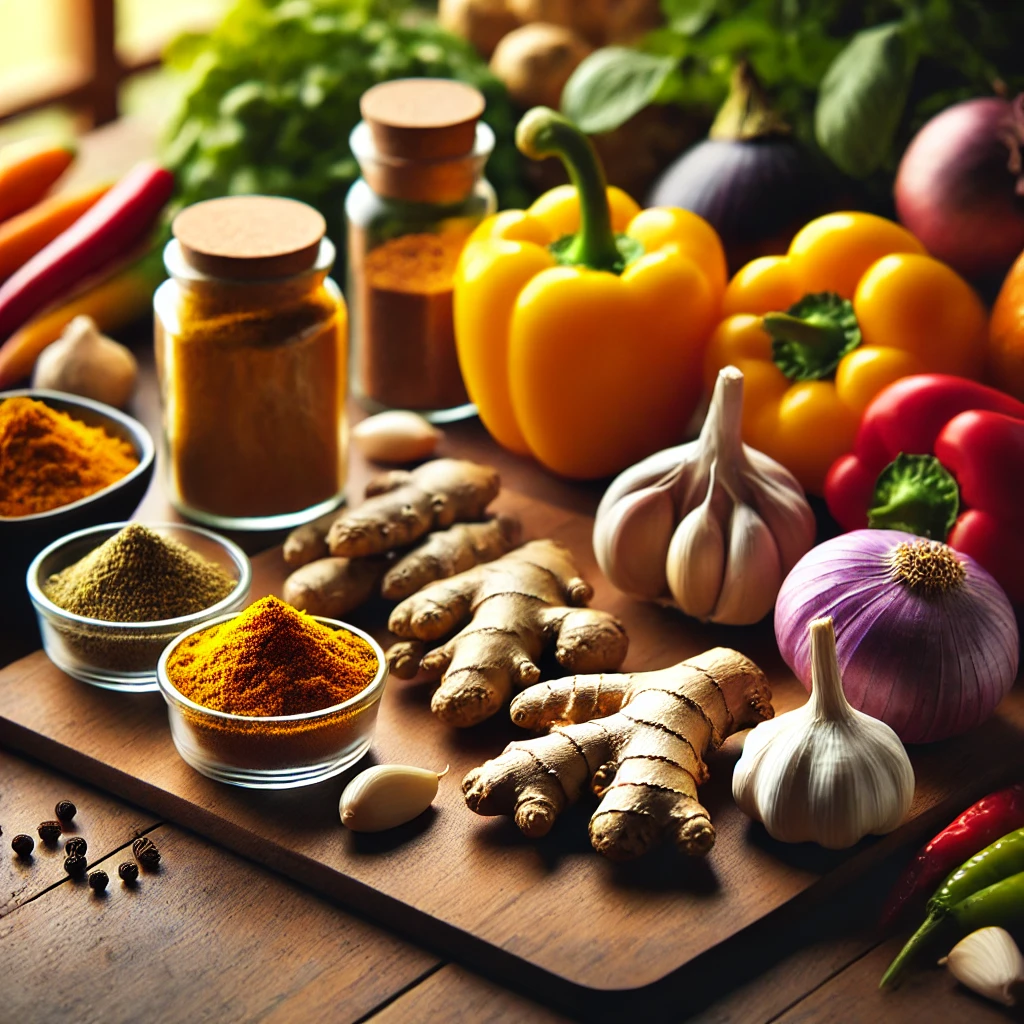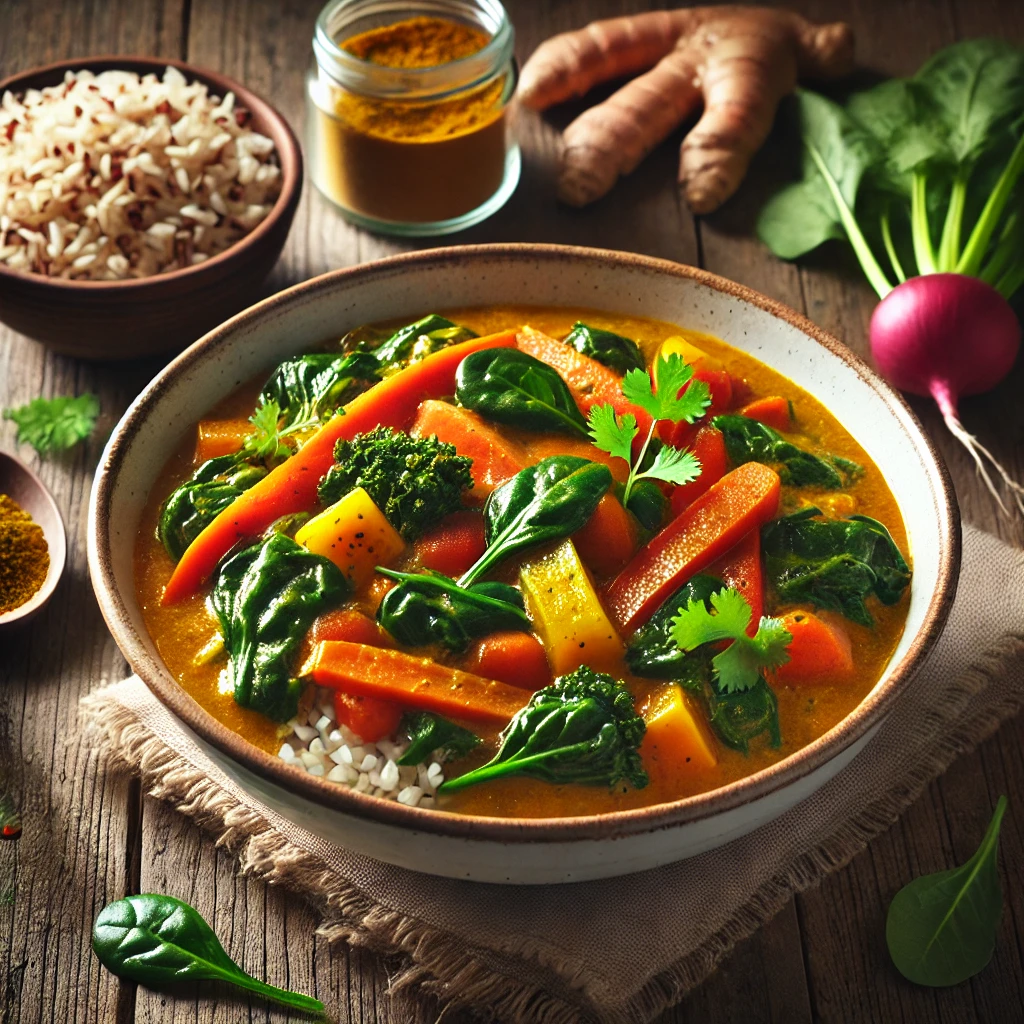Curry is a beloved dish worldwide, known for its rich flavors, aromatic spices, and versatility. But when it comes to health, not all curries are created equal. The healthiest curry balances flavor, nutrition, and preparation methods, delivering a satisfying meal that supports overall well-being.
In this article, we’ll explore what makes a curry healthy, identify the healthiest options across cuisines, and provide practical tips for crafting your own nutrient-packed curry at home.
Table of Contents
ToggleWhat Defines a Healthy Curry?
A healthy curry is one that prioritizes wholesome ingredients, minimizes unhealthy additives, and supports a balanced diet. Here’s what to look for:
1. Base
- Opt for tomato-based or broth-based curries, which are low in calories and rich in vitamins.
- Avoid heavy cream or butter-based curries, which are higher in saturated fats.
2. Proteins
- Choose lean proteins like chicken breast, fish, tofu, or legumes (e.g., lentils, chickpeas).
- Avoid fatty cuts of meat and high-fat additions like processed sausages.
3. Vegetables
- The healthiest curries include a variety of colorful vegetables, which provide fiber, vitamins, and antioxidants.
4. Spices
- Use antioxidant-rich spices like turmeric, cumin, coriander, and ginger. These add flavor without the need for excessive salt or sugar.
5. Cooking Methods
- Steaming, grilling, or lightly sautéing ingredients preserves nutrients.
- Avoid deep-fried add-ons like samosas or crispy toppings.
The Healthiest Types of Curry
Curries vary widely across cultures, each offering unique health benefits. Here are some of the healthiest options:
1. Vegetarian Curry
Vegetarian curries, like Chana Masala (chickpea curry), are high in plant-based proteins and fiber. They also tend to be lower in calories while offering essential nutrients like iron and potassium.
Health Tip: Use fresh tomatoes and spices for the base, and include vegetables like spinach or zucchini for added nutrients.
2. Lentil Curry (Dal)
Lentil-based curries are a staple in Indian cuisine and are packed with protein, fiber, and folate. They are also naturally low in fat and cholesterol.
Health Tip: Pair lentil curry with brown rice or quinoa for a complete protein.
3. Thai Green Curry
Thai green curry uses coconut milk, but you can make it healthier by opting for light coconut milk or reducing the amount used. It’s rich in vegetables like eggplant, green beans, and bell peppers.
Health Tip: Include lean proteins like tofu, shrimp, or chicken for a balanced dish.
4. Japanese Curry
Japanese curry tends to be milder and includes a mix of vegetables like carrots, onions, and potatoes. It is less spicy and can be prepared with a lighter roux for fewer calories.
Health Tip: Reduce salt content by making your own curry roux instead of using store-bought versions.
5. Turmeric-Rich Curries
Curries that heavily feature turmeric, like Keralan Fish Curry, are anti-inflammatory and great for heart health. Turmeric contains curcumin, a compound known to reduce inflammation and support overall health.
Health Tip: Combine turmeric with black pepper to enhance its absorption.
Key Ingredients for a Healthy Curry
To ensure your curry is as healthy as possible, focus on these nutrient-dense ingredients:
1. Protein-Packed Additions
- Lentils
- Chickpeas
- Tofu
- Skinless chicken
- White fish
2. Fiber-Rich Vegetables
- Spinach
- Carrots
- Cauliflower
- Bell peppers
- Broccoli
3. Healthy Fats
- Use olive oil or avocado oil for cooking.
- Limit ghee and butter to small amounts for flavor.
4. Super Spices
- Turmeric: Anti-inflammatory and antioxidant-rich.
- Ginger: Aids digestion and reduces bloating.
- Cumin: Improves digestion and balances blood sugar.
- Coriander: Adds flavor and helps with detoxification.
How to Make the Healthiest Curry at Home
Follow these steps to craft your own healthy curry:
- Choose a Base:
Start with a tomato base or light coconut milk for creaminess without excessive calories. - Add Protein:
Select lean proteins like chicken breast, tofu, or lentils. - Pack with Veggies:
Incorporate at least 3–4 types of vegetables for a nutrient boost. - Season with Spices:
Use a combination of turmeric, cumin, coriander, and fresh herbs for depth of flavor. - Limit Salt and Oil:
Use low-sodium broth and only 1–2 tablespoons of healthy oil. - Serve Smart:
Pair your curry with whole grains like brown rice or quinoa, or go low-carb with cauliflower rice.
Example: Healthy Chickpea Curry Recipe

Here’s a quick and easy recipe for one of the healthiest curries you can make:
Ingredients:
- 1 tablespoon olive oil
- 1 onion, finely chopped
- 2 garlic cloves, minced
- 1 tablespoon grated ginger
- 2 teaspoons ground turmeric
- 1 teaspoon ground cumin
- 1 can (400g) chickpeas, drained and rinsed
- 1 can (400g) diced tomatoes
- 2 cups fresh spinach
- ½ cup light coconut milk
- Salt and pepper to taste
- Fresh cilantro for garnish
Instructions:
- Heat olive oil in a pan and sauté onion, garlic, and ginger until fragrant.
- Add turmeric and cumin, stirring for 1 minute.
- Mix in chickpeas, tomatoes, and coconut milk. Simmer for 15 minutes.
- Stir in spinach and cook until wilted.
- Season with salt and pepper, then garnish with fresh cilantro.
- Serve with brown rice or quinoa.
This dish is rich in fiber, plant-based protein, and essential vitamins while remaining low in fat and calories.
Tips for Healthier Curry Eating
- Control Portions:
Even healthy curries can become calorie-dense if consumed in large amounts. - Skip the Extras:
Avoid high-fat sides like fried naan or parathas. Opt for whole-grain roti instead. - Mind the Sodium:
Reduce salt by using fresh herbs and spices to enhance flavor. - Limit Cream:
Use yogurt or cashew cream sparingly for a creamy texture without extra fat.
Frequently Asked Questions
- What’s the healthiest curry base?
Tomato-based curries are the healthiest due to their low-calorie content and high vitamin C levels. - Can I make curry low-carb?
Yes, use cauliflower rice and avoid starchy vegetables like potatoes. - Is coconut milk healthy?
In moderation, yes. Opt for light coconut milk to reduce saturated fat. - Can curry help with weight loss?
Yes, when made with lean proteins, plenty of vegetables, and minimal oil. - What is the best vegetarian curry for health?
Lentil curry or chickpea curry is highly nutritious and filling. - How can I make my curry creamier without cream?
Use pureed vegetables like cauliflower or add a small amount of cashew cream. - Is curry high in sodium?
Not if you use fresh ingredients and avoid store-bought sauces. - What’s the best oil for cooking curry?
Olive oil or avocado oil are healthier options. - Are spicy curries healthier?
Yes, chili can boost metabolism and promote fat burning. - How often should I eat curry?
Homemade curry can be eaten 2–3 times a week as part of a balanced diet.
Conclusion: Enjoying the Healthiest Curry
The healthiest curry combines fresh ingredients, lean proteins, and nutrient-packed spices, offering a meal that’s both delicious and beneficial for your health. Whether you’re cooking vegetarian curries or experimenting with global flavors, the key is to keep it balanced and wholesome. Start crafting your own healthy curry today for a flavorful journey toward better nutrition.

